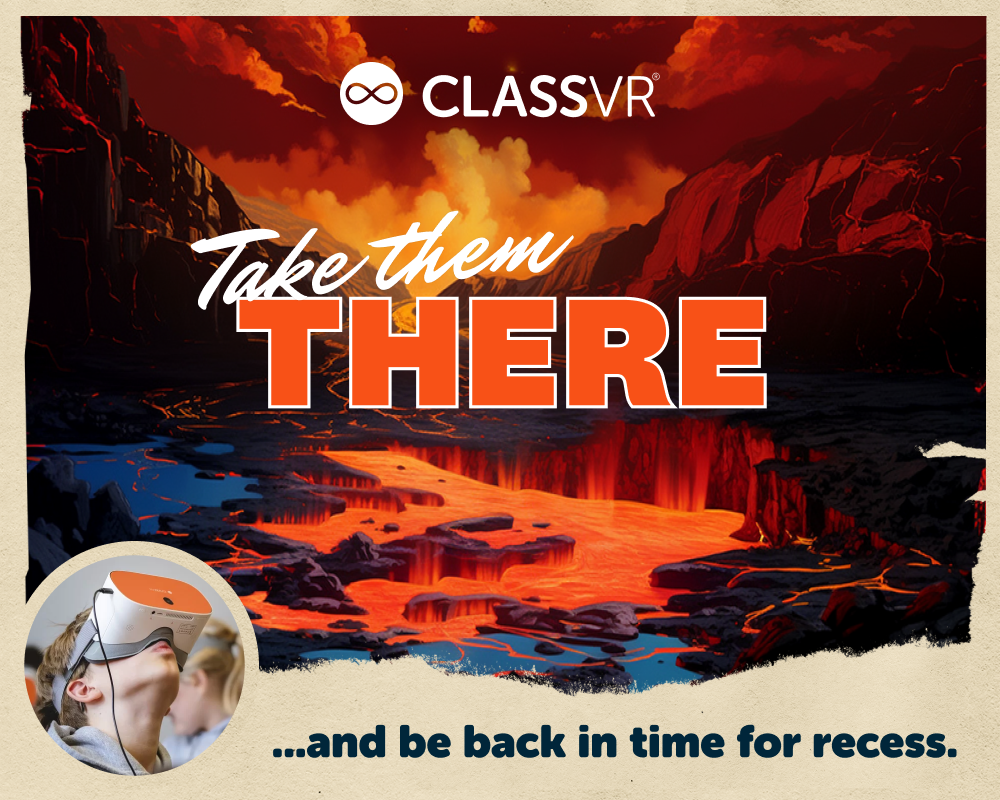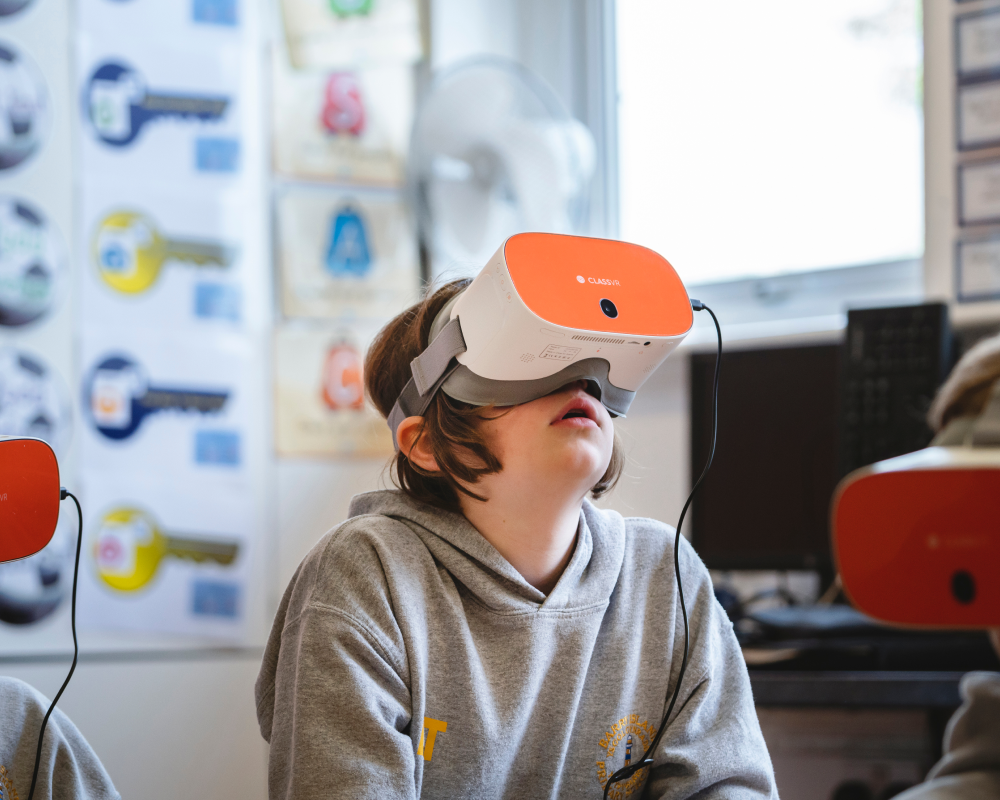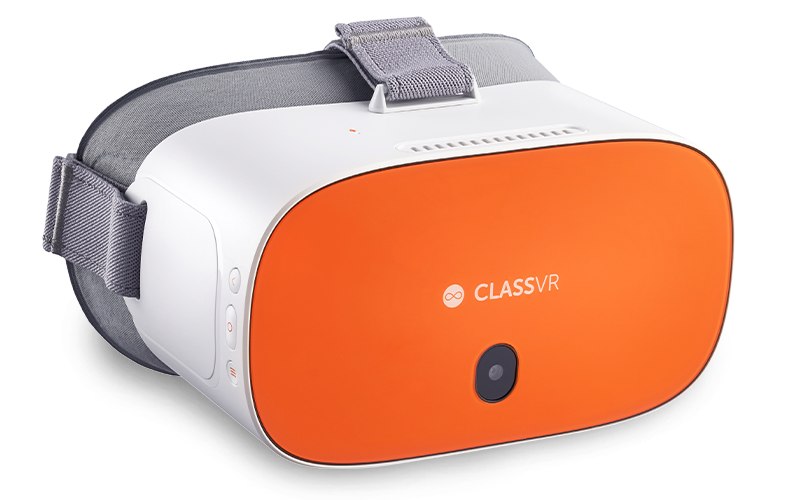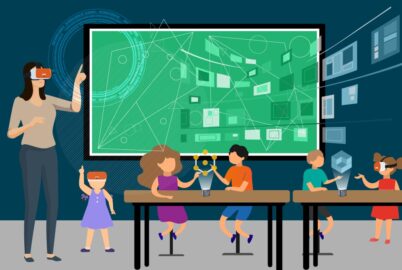
ESSER grew out of a need to tackle intersecting crises brewing in K-12 education – chief among them, the lingering negative impacts of the pandemic on students’ learning. But rather than purely a means to enact urgent repairs, this ‘emergency’ funding program is actually proving to be an exciting driver of progression, innovation, and the adoption of new methodologies and technologies.
Pioneering educational VR and AR system, ClassVR, is perfectly positioned to help teachers and policy-makers make the most of this eagerness to push K-12 education forwards. The stated aims of the ESSER program dovetail with ClassVR’s capabilities and content – one of the key reasons that the accessible, all-ages headsets are making their way into so many K-12 classrooms right now.
Here are five of the most compelling ways that ESSER and ClassVR complement each other.
Table of contents
1. The mitigation of learning loss
One of the biggest educational issues to emerge from the pandemic is ‘learning loss’ – the academic setbacks and educational gaps that students experienced due to disruptions in traditional classroom learning. Research shows a marked decline in students’ progress, skills, and knowledge during the pandemic-enforced periods of remote schooling, or limited in-person instruction.
One of the key aims of ESSER is to mitigate this learning loss, and to get students back on track, academically, following years of on/off disruption to their education.
ClassVR helps address this by providing immersive and engaging educational experiences. Through virtual reality, students can explore complex concepts, historical events, and scientific phenomena, enhancing their understanding and academic achievement.
“The principal benefit that we see with students is around engagement,” says Rupert Rawnsley, one of the principal architects of the technology underpinning ClassVR. “Utilizing ClassVR headsets allows teachers to pierce through students’ reticence to engage with a certain topic.
“Today’s students have grown up with YouTube, with TikTok, and so slide decks or videos don’t really make a huge dent in terms of getting their attention and imparting information. But with ClassVR content, they’re exploring and engaging with this 3D world. And that’s very stimulating and very impactful, educationally.”
In its report on VR’s effectiveness as a learning tool, PwC found that learners using VR were four times more focused than those consuming other electronic content; were 3.75 times more emotionally connected to lessons than purely-classroom learners; retained the necessary knowledge four times faster; and were 275% more confident in applying what they’d learned through VR.
2. The adoption and implementation of new technologies
The ESSER funding programme encourages grant applications that will be put to use investing in schools’ technology infrastructure. Introducing ClassVR aligns with this by instantly enhancing a school’s digital capabilities, ensuring K-12 students have ready access to VR/AR devices and the associated immersive content.
ClassVR was purpose-designed to be easy to implement and use in a K-12 learning environment. “We're very focused on the practicalities of VR in the classroom,” says ClassVR’s Rupert Rawnsley. “It's relatively easy to build a headset and create some whizzy content for it and make everybody go ‘Wow!’. But it's a completely different thing to make that work in any classroom.
“The classroom is actually quite an extreme environment for technology: poor WiFi, limited space and so on. So we really focus on working within these tight constraints. It’s what’s made us successful.”
Beyond dealing with current challenges borne of the pandemic – the aforementioned learning loss – investing in technology such as ClassVR creates future-ready learning environments. It positions schools to adapt to evolving educational technology trends, and helps provide students with the digital skills and familiarity they’ll need for success in an increasingly technology-driven world.

3. Fostering equity and inclusivity through technology
ESSER funding is designed to bridge the digital divide by ensuring that every student has access to the technology and connectivity required for effective learning. Using an ESSER grant to obtain ClassVR can contribute to equity by providing all students with access to immersive learning experiences, whatever their socioeconomic background.
Affordable and accessible, ClassVR levels the digital playing field for underprivileged students. How serious is that digital divide? A 2021 study found that, in the US, 31% of black households, 33% of Hispanic households, and 41% of households with incomes below $30k did not have a computer.

4. Improving standards of student wellbeing
The pandemic had a profound impact on many students’ mental health, unleashing a wave of anxiety, stress, and isolation. In response, there has been a widespread expansion of social-emotional learning (SEL) programs, offering students valuable emotional tools and coping strategies that equip them with the resilience needed to navigate the complexities of both their school and personal lives.
ClassVR can be used to support students’ mental health and improve their emotional wellbeing by creating calming and therapeutic VR experiences. It can also be used to help students with special behavioral needs attain their educational goals.
Salem City Schools teacher Branden Wells has used ClassVR as part of his work with students with special educational needs. “I believe a lot of these students struggle with intrinsic motivation. It’s about finding ways to motivate kids with special needs to achieve their academic goals, and a lot of the time VR is the way to do this. It takes the learning from ‘just another textbook’, where they’re not interested, to an exciting learning experience.
“That, in itself, is motivating. I had kids on behavior plans, and if they achieved their goal, we would go on a VR roller coaster ride. Then the students with special needs become the VR experts that show the other kids how to do it. It leveled the playing field, because now you've got the kids that don’t struggle with learning, asking the kids who do, for answers and assistance. It’s beautiful.”

5. Fostering professional development
Schools can direct ESSER funding towards educators’ professional development. Faculty members can receive training on integrating ClassVR into their teaching methods effectively, expanding not only the school’s capabilities but their own skillsets, too.
The further teachers dive into the possibilities afforded by ClassVR, the more enthusiastic they become in finding exciting new ways to harness the technology for their students.
Troy Thams, K-12 Technology Instructor at Sioux Central Community, Iowa, has been using ClassVR for 12 months, working with students from first grade up to tenth. Delighted with the impact of ClassVR in its first year alone, Troy is now considering where the technology can take students next.
“We want to dive into CoSpaces more,” says Troy, referring to the software platform that allows students to build objects and environments in 3D, using either simplified or advanced coding. “I’m looking to start a coding club after school, and let kids come in and code in CoSpaces and explore their creations in ClassVR. That’s just one avenue that we plan on going down.
“We also want to target our Title III kids that don’t have a passion for reading. We want to immerse them in books and let them experience the stories through VR. It’ll really help make reading exciting.”
To learn about getting ESSER funding for educational VR, download the ClassVR ESSER funding pack.
Want to see ClassVR in action? Book a free, no-obligation, one-hour demo.



